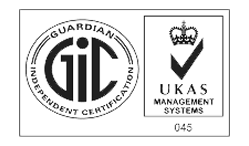Reclaimed flux for welding is a practical option for welders looking to cut material costs and reduce waste. Instead of discarding used flux after welding, shops and hobbyists can gather it, clean it, and get it back into service. This method helps manage expenses, ensures a steady supply of flux, and helps protect the environment. In the face of rising prices and supply delays, reclaimed flux offers a simple answer. In this guide, we share clear steps and useful tips to help you start saving money and improving your welding results with reclaimed flux.
Understanding Reclaimed Flux
Flux is the coating on welding rods that melts during welding to shield the hot metal from oxygen and other gases in the air. After the weld cools, this coating breaks off as slag, which can mix with other bits of metal and dust. Reclaimed flux is simply that leftover material after you clean it and remove unwanted particles. While new flux has perfect consistency, a well-reclaimed batch can come very close. Properly processed, reclaimed flux offers the protection you need without extra cost, and it keeps your welds reliable.
Checking the Quality of Reclaimed Flux
Before you use reclaimed flux in serious work, it is wise to check its quality. Good flux should look uniform in color and feel light when you pick up a small pinch. Avoid dark or wet patches, which can mean moisture or trapped oil. If you spot large metal scraps or clumps, filter them out by hand or with a simple cloth filter. You can also take a small test weld on scrap metal to see if the flux melts cleanly and forms a smooth bead. This check helps avoid weak spots in your main project.
Benefits of Reclaimed Flux
Using reclaimed flux brings clear gains. First, it lowers your cost of goods. You spend less on buying new flux when you make use of what you already have. Second, you keep work on track by having a backup supply ready. Third, repurposing flux reduces the pile of waste slag and scrap, so you make fewer trips to the waste bin. Over time, these benefits can grow, especially for busy shops and commercial work settings where every rupee or dollar counts.
How to Reclaim Flux
To reclaim flux, start by gathering the used material from your welding tray, bucket, or recovery unit. Remove any large bits of metal with a magnet or tweezers. Then, pour the flux through a mesh sieve to separate the grains from very fine dust and debris. Spread the sifted flux in a single layer on a flat tray. Place the tray in a drying oven or a warm, dry area. Set the temperature around 100–120 °C (212–248 °F) and let the flux sit for two to four hours. After it feels thoroughly dry, let it cool in a sealed container once it reaches room temperature. Perform a trial weld on scrap metal to make sure it works well before using it on your main project.
Common Mistakes to Avoid
One common error is letting reclaimed flux sit in damp air, which can ruin its ability to shield the weld. Always seal your reclaimed flux in an airtight container once it has cooled. Another mistake is skipping the test weld. Without trying it first, you might find your project has poor welds or uneven beads. Finally, mixing too much reclaimed flux with fresh flux can change the melting point and affect the weld pool. Stick to a mix of around 20–30 % reclaimed flux if you are not sure of its full quality before using it in critical work.
Best Practices for Strong Welds

Store both new and reclaimed flux in labeled bins to know what you are using. Keep bins off the ground and away from doors or windows to avoid sparks or moisture. Before welding, gently warm welding rods in an oven or rod heater for about 30 minutes if you suspect high humidity. When you mix new and reclaimed flux, aim for a steady blend so the weld pool heats evenly. Work steadily and avoid long pauses, since stopping too long can let rods cool and pick up more moisture. Also, always wear basic safety gear, like gloves and a simple dust mask, to avoid breathing in any fine particles.
Environmental and Cost Impact
By reclaiming flux, you reduce the need to mine and process raw material, which uses fuel and energy. You cut transportation costs and lower your carbon footprint. Waste slag lands in fewer bags, so you help reduce landfill bulk. Over time, savings on material and disposal can add up to thousands of rupees or dollars for busy shops. Beyond financial gains, you support a more sustainable welding practice that many customers appreciate.
Reclaimed flux for welding is a simple and effective way to save money, reduce waste, and keep your welds strong. By checking its quality, following safe drying steps, and storing it right, you can make reclaimed flux a reliable part of your workflow. For expert support and reliable welding supplies, reach out to Logos Weld Products, Welding Electrode Making Machine Manufacturers.



